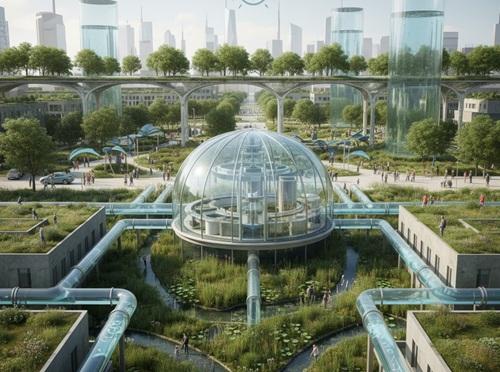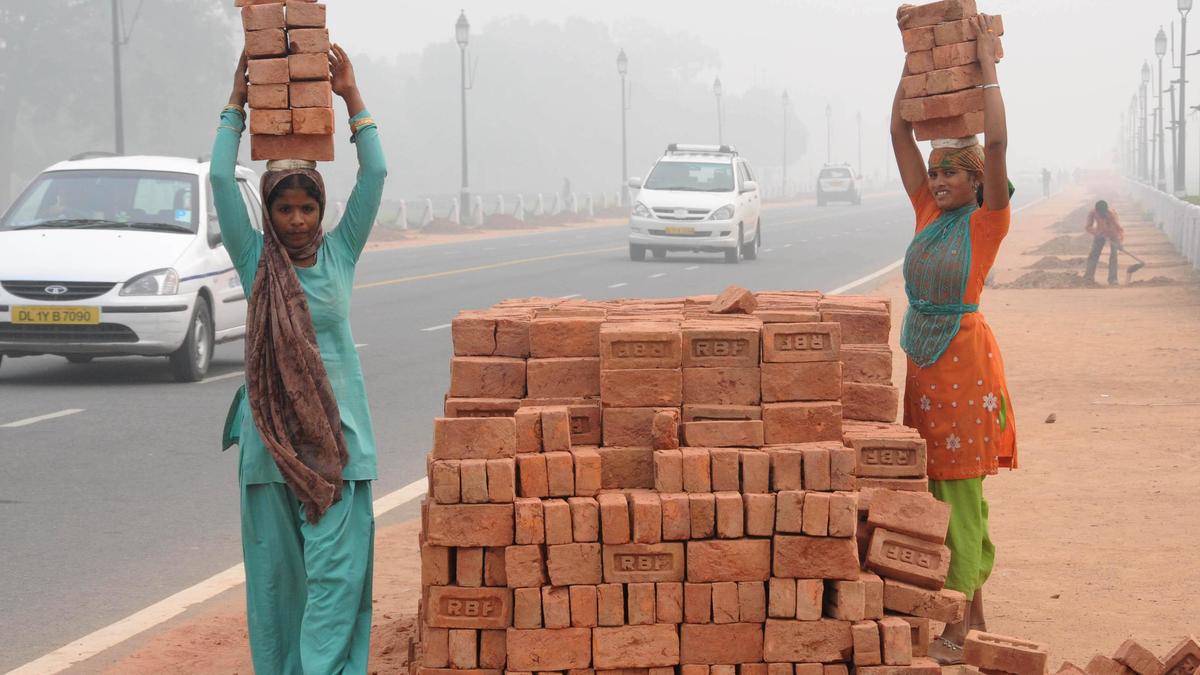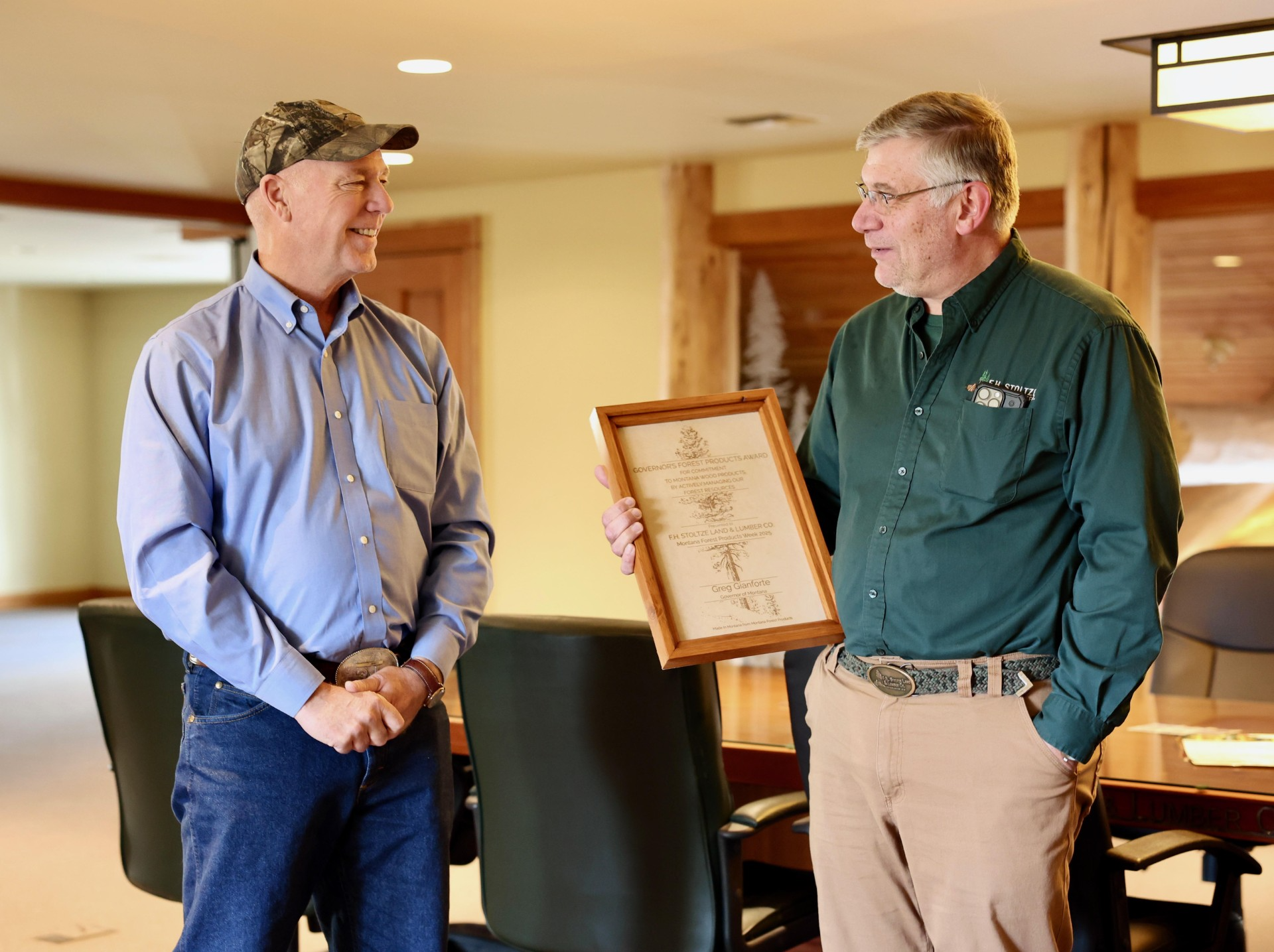‘The Forest Is Our Home’: Protected Area Connects South American Conservation Zones – The Pew Charitable Trusts
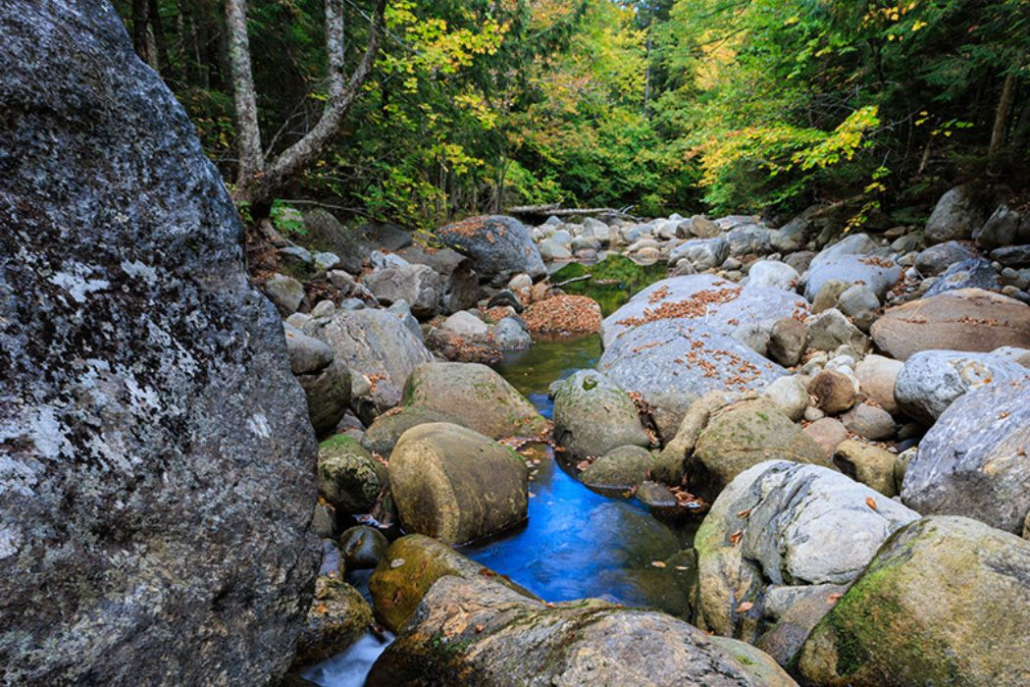
Report on Indigenous-Led Conservation in the Gran Chaco and its Contribution to the Sustainable Development Goals
Introduction: The Ñembi Guasu Protected Area
The Gran Chaco, the second-largest forest region in the Americas, is a critical ecoregion for biodiversity and home to approximately 9 million people, including numerous Indigenous communities. Within this region, in Bolivian Guaraní territory, the Gobierno Autónomo Indígena Originario Campesino (GAIOC) of Charagua Iyambae was established in 2017. This report details the GAIOC’s management of the Ñembi Guasu Protected Area, a 3-million-acre conservation zone, analyzing its operations through the framework of the United Nations Sustainable Development Goals (SDGs).
Advancing SDG 16 (Peace, Justice and Strong Institutions) and SDG 10 (Reduced Inequalities) through Indigenous Self-Governance
The establishment and operation of the Ñembi Guasu Protected Area serve as a powerful model for achieving SDG 16 and SDG 10. The GAIOC represents a strong, inclusive, and accountable institution led by and for Indigenous peoples.
Key Achievements in Governance and Equality:
- Indigenous Self-Governance (SDG 16): The GAIOC, Bolivia’s first autonomous Indigenous government, operates under its own laws and procedures. It has established several protected areas, demonstrating effective and localized governance in natural resource management.
- Local Leadership and Employment (SDG 8, SDG 10): The management team for Ñembi Guasu, including its Director, Alejandro Arambiza Segundo, and all five park rangers, are from local Guaraní or Chiquitano communities. This model promotes decent work and economic growth within the community while reducing inequalities by empowering local populations.
- Protection of Vulnerable Peoples (SDG 10): A core objective of the protected area is to safeguard the Ayoreo Indigenous community, which lives in voluntary isolation. This commitment directly addresses the need to protect the rights and heritage of the most marginalized groups.
Protecting and Restoring Terrestrial Ecosystems (SDG 15: Life on Land)
The primary function of Ñembi Guasu is the conservation of terrestrial ecosystems, directly aligning with the targets of SDG 15. The area’s management integrates ancestral knowledge with modern conservation science to protect biodiversity and ensure the sustainable use of natural resources.
Core Conservation Objectives:
- Halting Biodiversity Loss: The area protects rich biodiversity, including large mammals such as the jaguar, puma, and anteater, and the unique, endemic Abayoy “short forest.”
- Promoting Sustainable Use of Ecosystems: Management is guided by Guaraní ancestral knowledge, which dictates sustainable practices such as respecting animal breeding seasons for hunting and preserving the integrity of soil and water resources. This knowledge is being passed to new generations to ensure long-term stewardship.
- Maintaining Ecological Connectivity: Ñembi Guasu serves as a vital ecological corridor, linking the Gran Chaco, Chiquitano forest, and the Pantanal wetland. This connectivity is essential for the movement of species, seed dispersal, and the overall resilience of regional ecosystems.
Building Resilience and Taking Climate Action (SDG 13: Climate Action)
The Gran Chaco is increasingly threatened by climate-related disasters, particularly wildfires. The management of Ñembi Guasu demonstrates a proactive approach to climate adaptation and mitigation.
Strategies for Climate Resilience:
- Wildfire Prevention and Management: Wildfires are identified as the main threat to the region. After devastating fires in 2019 and 2021, the park ranger team has developed significant expertise. In the most recent fire season, the team successfully prevented fires from entering the protected area by creating firebreaks, conducting continuous monitoring, and assisting neighboring municipalities.
- Capacity Building: The team has undergone extensive training in fire response and community monitoring, strengthening its ability to manage climate-related emergencies effectively. This builds local resilience against the growing threat of severe fire seasons.
Addressing Challenges through Partnerships for the Goals (SDG 17)
The long-term sustainability of Ñembi Guasu faces several challenges, which are being addressed through collaborative efforts and strategic partnerships, embodying the spirit of SDG 17.
Ongoing Threats and Collaborative Solutions:
- Identified Threats:
- Illegal settlements and hunting
- Lack of clear boundaries with neighboring municipalities
- Insufficient resource allocation from the government
- Limited participation from private landholders
- Partnership-Based Strategies:
- The GAIOC administers the area with technical and financial support from the Nativa Foundation and The Pew Charitable Trusts.
- Partnerships are leveraged for training, equipment, and raising national and international awareness of the area’s significance.
- Efforts are underway to create sustainable development micro-projects for local families, linking conservation directly to poverty reduction (SDG 1) and sustainable livelihoods (SDG 8).
Conclusion: A Holistic Model for Sustainable Development
The Ñembi Guasu Protected Area, under the stewardship of the GAIOC, exemplifies an integrated approach to sustainable development. By combining Indigenous self-governance (SDG 16), the protection of cultural and natural heritage (SDG 11, SDG 15), climate action (SDG 13), and collaborative partnerships (SDG 17), the initiative provides a powerful blueprint for how local, Indigenous-led conservation can achieve global sustainability targets. The future success of the area depends on continued support for local leadership, the integration of ancestral knowledge with scientific research, and strengthened collaboration among all stakeholders.
Analysis of Sustainable Development Goals (SDGs) in the Article
1. Which SDGs are addressed or connected to the issues highlighted in the article?
The article on the Gran Chaco and the Ñembi Guasu protected area addresses and connects to several Sustainable Development Goals (SDGs). The primary focus is on environmental conservation and Indigenous rights, but the interconnected nature of the issues touches upon goals related to institutions, economic development, climate action, and partnerships.
- SDG 15: Life on Land: This is the most prominent SDG, as the article is centered on the conservation of the Gran Chaco dry forest, its rich biodiversity (jaguars, pumas, tapirs), and the sustainable management of this terrestrial ecosystem by the local Indigenous community.
- SDG 16: Peace, Justice and Strong Institutions: The article highlights the creation and operation of the Gobierno Autónomo Indígena Originario Campesino (GAIOC) of Charagua Iyambae, Bolivia’s first Indigenous government. This represents the development of effective, accountable, and inclusive institutions at the local level, empowering Indigenous peoples to govern their own territories.
- SDG 13: Climate Action: The significant threat of wildfires, their increasing severity, and the community’s organized efforts to combat them directly relate to strengthening resilience and adaptive capacity to climate-related hazards and natural disasters.
- SDG 11: Sustainable Cities and Communities: Specifically, this goal’s focus on heritage is relevant. The article describes Ñembi Guasu as representing “the heritage of the Guaraní nation” and a place of immense natural heritage, linking its protection to safeguarding the world’s cultural and natural legacy.
- SDG 10: Reduced Inequalities: The entire initiative empowers the Guaraní people, a historically marginalized group, by recognizing their right to self-governance and control over their ancestral lands. This directly addresses the goal of promoting the social, economic, and political inclusion of all.
- SDG 8: Decent Work and Economic Growth: The article mentions the employment of local community members (Guaraní and Chiquitano) as park rangers and managers. It also refers to the creation of “sustainable development micro-projects for the community’s families,” which promotes inclusive and sustainable economic opportunities.
- SDG 6: Clean Water and Sanitation: The conservation efforts explicitly include water resources, with the establishment of the “Irenda Water Management Area” and the protection of the “Parapetí River.” The community’s ancestral knowledge includes “how not to contaminate the water.”
- SDG 17: Partnerships for the Goals: The success of the Ñembi Guasu protected area is built on multi-stakeholder partnerships. The article explicitly names the collaboration between the GAIOC, the local Nativa Foundation, and international NGOs like The Pew Charitable Trusts and the Wildlife Conservation Society.
- SDG 4: Quality Education: The article discusses the importance of education and training for local staff to manage the protected area effectively. It mentions the training of community members as “parabiologists” and the goal of conveying ancestral knowledge to “new generations,” which aligns with education for sustainable development.
2. What specific targets under those SDGs can be identified based on the article’s content?
Based on the article’s content, several specific SDG targets can be identified:
- Target 15.1: Ensure the conservation, restoration and sustainable use of terrestrial and inland freshwater ecosystems, in particular forests and wetlands.
- Explanation: The creation and management of the Ñembi Guasu Protected Area, which covers almost 3 million acres of the Gran Chaco dry forest and links to the Pantanal wetland, is a direct action towards this target.
- Target 15.5: Take urgent and significant action to reduce the degradation of natural habitats, halt the loss of biodiversity and protect and prevent the extinction of threatened species.
- Explanation: The article states a key objective is to “preserve and conserve not only the trees and water but also the large mammals found within the protected area, such as the jaguar, the puma, and the anteater.”
- Target 15.7: Take urgent action to end poaching and trafficking of protected species.
- Explanation: The article explicitly lists “illegal hunting” as one of the threats affecting Ñembi Guasu that the management team works to prevent through monitoring and patrolling.
- Target 13.1: Strengthen resilience and adaptive capacity to climate-related hazards and natural disasters.
- Explanation: The article details the extensive efforts of the park ranger team to fight wildfires, including setting up firebreaks, continuous monitoring, and providing support to neighboring communities. Their success in preventing fire from entering the protected area in the most recent year demonstrates enhanced resilience.
- Target 11.4: Strengthen efforts to protect and safeguard the world’s cultural and natural heritage.
- Explanation: Ñembi Guasu is described as the “heritage of the Guaraní nation” and a sanctuary for unique ecosystems like the Abayoy forest. Its protection is framed as safeguarding both cultural identity and natural biodiversity.
- Target 16.7: Ensure responsive, inclusive, participatory and representative decision-making at all levels.
- Explanation: The establishment of the GAIOC, an Indigenous self-government operating “under its own laws and procedures,” and the management of the protected area by a team with “local roots” are prime examples of inclusive and representative decision-making.
- Target 10.2: Empower and promote the social, economic and political inclusion of all, irrespective of race, ethnicity, or other status.
- Explanation: The article focuses on the empowerment of the Guaraní and other Indigenous peoples through the GAIOC, giving them political authority and control over their land and resources.
- Target 6.6: Protect and restore water-related ecosystems.
- Explanation: The GAIOC has established specific protected areas for water, including the “Irenda Water Management Area” and the “Parapetí River and the Bañados del Isoso ‘Yande Yari’ connectivity area,” to ensure their conservation.
- Target 17.17: Encourage and promote effective public, public-private and civil society partnerships.
- Explanation: The article explicitly states that the GAIOC administers Ñembi Guasu with “technical and financial support from the local Nativa Foundation and The Pew Charitable Trusts,” showcasing a functional civil society partnership.
3. Are there any indicators mentioned or implied in the article that can be used to measure progress towards the identified targets?
The article mentions or implies several indicators that can be used to measure progress:
- Area of protected land (Indicator for Target 15.1): The article provides specific figures, such as the Ñembi Guasu protected area covering “almost 3 million acres” and the Gran Chaco having “nearly 90 million acres” remaining intact. Progress can be measured by maintaining or increasing this protected area.
- Population surveys of key species (Indicator for Target 15.5): The management team’s activities include “surveying bird and large mammal populations.” The results of these surveys serve as a direct indicator of the health of biodiversity and the success of conservation efforts.
- Incidence of illegal activities (Indicator for Target 15.7): The team’s work to “prevent any misuse of the protected area by actively monitoring and patrolling” for threats like “illegal hunting” and “illegal settlements” implies that the number of such incidents is a key performance indicator.
- Frequency and extent of wildfires (Indicator for Target 13.1): A key success metric mentioned is that last year “was the first year we were able to fight the fire before it crossed our boundaries.” This demonstrates that the number of fires entering the protected area and the acreage burned are critical indicators of resilience.
- Employment of local and Indigenous people (Indicator for Target 8.5): The article specifies that the management team consists of “seven people” and that the “whole team has local roots, whether Guaraní or Chiquitano.” The number and proportion of local people employed in conservation are clear indicators of inclusive growth.
- Existence and functionality of Indigenous governance (Indicator for Target 16.7): The existence of the GAIOC itself, created in 2017 and operating under its own laws to manage the territory, is a primary indicator of inclusive and representative decision-making.
- Number and success of community projects (Indicator for Target 8.9): The effort to identify and support “sustainable development micro-projects for the community’s families” is an action whose progress can be measured by the number of projects initiated and the economic benefits they provide.
- Number of active partnerships (Indicator for Target 17.17): The article names several partners (Nativa Foundation, The Pew Charitable Trusts, Wildlife Conservation Society). The number of such collaborations and the level of financial and technical support they provide are indicators of a strong partnership ecosystem.
4. Table of SDGs, Targets, and Indicators
| SDGs | Targets | Indicators Identified in the Article |
|---|---|---|
| SDG 15: Life on Land | 15.1: Ensure conservation and sustainable use of terrestrial and inland freshwater ecosystems.
15.5: Halt biodiversity loss. 15.7: End poaching and illegal trafficking of wildlife. |
– Area of forest under protection (e.g., “almost 3 million acres” in Ñembi Guasu). – Establishment of protected areas. – Population surveys of large mammals (jaguar, puma) and birds. – Monitoring and patrolling activities to prevent illegal hunting. |
| SDG 13: Climate Action | 13.1: Strengthen resilience and adaptive capacity to climate-related hazards. | – Implementation of a wildfire prevention and response strategy (firebreaks, night-time fighting). – Success metric: “the first year we were able to fight the fire before it crossed our boundaries.” |
| SDG 11: Sustainable Cities and Communities | 11.4: Protect and safeguard the world’s cultural and natural heritage. | – Designation of Ñembi Guasu as a protected area to safeguard Guaraní cultural heritage and unique natural ecosystems (Abayoy forest). |
| SDG 16: Peace, Justice and Strong Institutions | 16.7: Ensure responsive, inclusive, participatory and representative decision-making. | – Existence and operation of the Indigenous self-government (GAIOC) since 2017. – Management of the protected area by a team of local Indigenous people. |
| SDG 10: Reduced Inequalities | 10.2: Empower and promote the social, economic, and political inclusion of all. | – Establishment of the GAIOC, granting political inclusion to Indigenous peoples. – Protection of the rights of Indigenous communities, including those in voluntary isolation (Ayoreo). |
| SDG 8: Decent Work and Economic Growth | 8.5: Achieve full and productive employment and decent work for all. | – Number of local community members employed in conservation (e.g., the “seven people” on the management team). – Creation of “sustainable development micro-projects.” |
| SDG 6: Clean Water and Sanitation | 6.6: Protect and restore water-related ecosystems. | – Establishment of specific protected zones for water resources (Irenda Water Management Area, Parapetí River). |
| SDG 4: Quality Education | 4.7: Ensure all learners acquire knowledge and skills for sustainable development. | – Training of local people as parabiologists and park rangers. – Efforts to convey ancestral knowledge to new generations. |
| SDG 17: Partnerships for the Goals | 17.17: Encourage and promote effective public, public-private and civil society partnerships. | – Active collaboration with NGOs (Nativa Foundation, The Pew Charitable Trusts, Wildlife Conservation Society) providing technical and financial support. |
Source: pew.org

What is Your Reaction?
 Like
0
Like
0
 Dislike
0
Dislike
0
 Love
0
Love
0
 Funny
0
Funny
0
 Angry
0
Angry
0
 Sad
0
Sad
0
 Wow
0
Wow
0




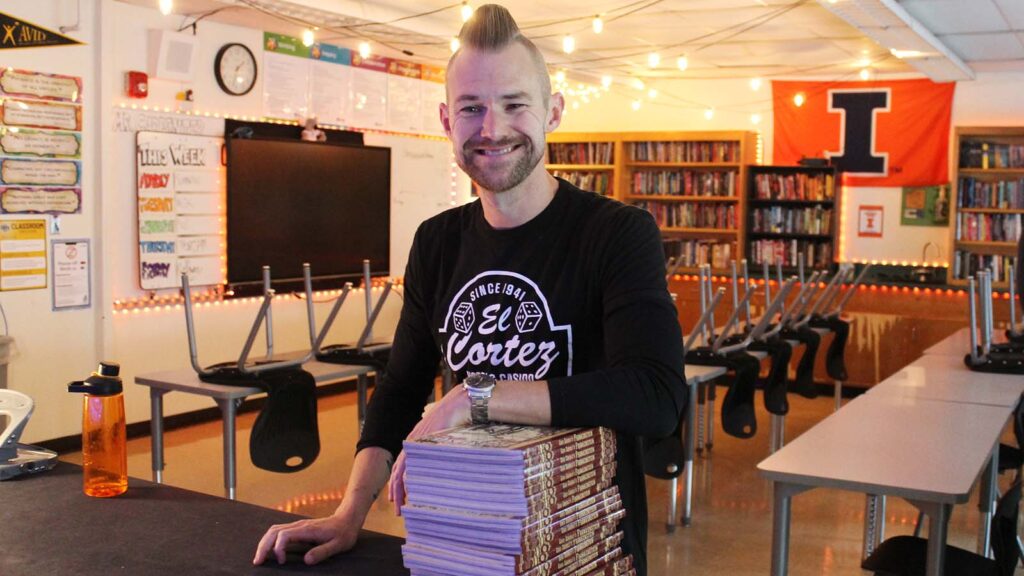

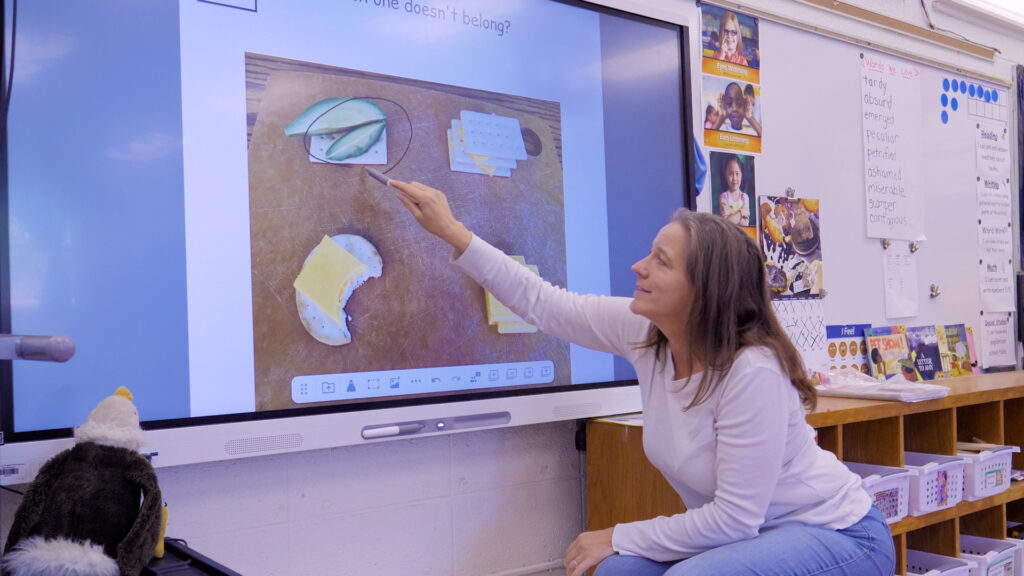


















_1.png?#)




